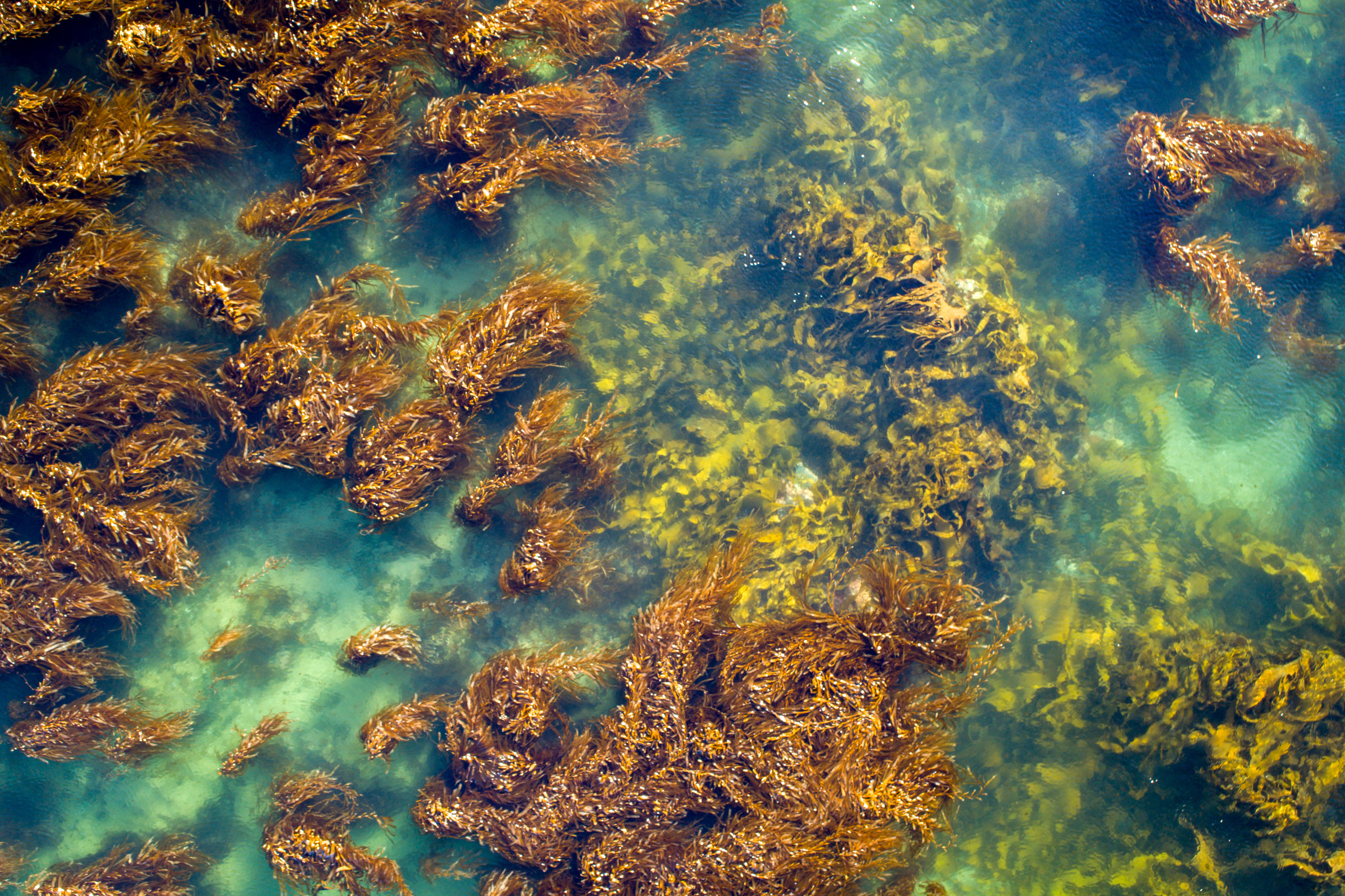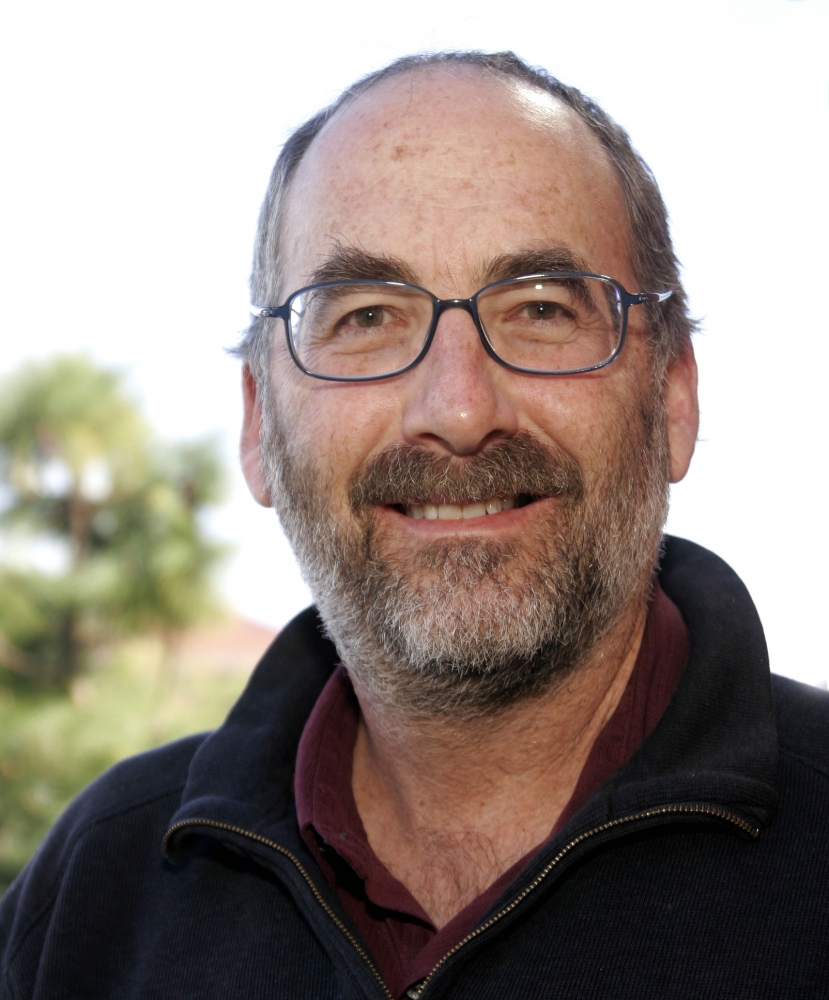
The View from Above


What factors drive the health, growth and productivity of giant kelp? There are several, but according to researchers at UC Santa Barbara and at Woods Hole Oceanographic Institution (WHOI), what you see depends on the scale at which you’re observing.
“Depending on your spatial scale of observation — whether you are looking at kelp forests regionally or really honing in on a specific local area — the patterns that manifest at these scales may be indicative of different drivers,” said Tom Bell, a project scientist at UC Santa Barbara’s Earth Research Institute and assistant scientist at WHOI, and lead author of a paper published in the Proceedings of the National Academy of Sciences. Being able to observe the different drivers of giant kelp productivity and health across various scales, he said, can yield a more nuanced, current understanding of how kelp forests respond to changing climactic conditions.
An Ephemeral Foundation Species
Giant kelp (Macrocystis pyrifera) are the largest marine algae in the world. Stretching to more than 100 feet in height, they can be found in dense patches along the California coast. They are host to a wide array of marine animals that rely on them for food, shelter and to rear their young. People, too, rely on kelp forests for recreation and to support and attract fish and other seafood.
“Giant kelp is a foundation species and has an outsized role in the dynamics of kelp forest ecosystems,” said David Siegel, a professor of oceanography at UCSB and a co-author on the paper. As a result, he added, resource agencies and conservation groups are interested in monitoring and managing these ephemeral systems using novel remote sensing tools developed at UC Santa Barbara.
But what controls the changes in a kelp forest’s canopy cover? According to the researchers, discerning that requires assessing external interactions of kelp with the environment, as well as their internal biological processes — particularly senescence, or the kelps’ age-related physical deterioration over time. Making adequate assessments of both intrinsic and extrinsic factors has been a challenge, they say, because of “the inability to track both plant abundance and health on appropriate scales.” Field measurements tend to occur in discrete areas over small scales, and the lack of relevant measurements over large, continuous scales makes it difficult to tease apart how the environment and age demographics influence kelp populations.
A Bigger Picture
Enter remote sensing technology. Using data collected by satellite and by aircraft, Bell and Siegel focused on a 4,000-square-kilometer study area in the Santa Barbara Channel, a section of UCSB’s Santa Barbara Coastal Long-Term Ecological Research site. The researchers used three decades of satellite imaging to assess canopy biomass and age dynamics. They also used repeat imaging spectrometer data collected by plane from 2013-15 to estimate the chlorophyll to carbon ratio — an established proxy for physiological condition. To these broad spatial measurements they added longitudinal, rapidly repeated field observations of kelp health and productivity to assess the roles of kelp frond age and environmental conditions on kelp population dynamics.
The researchers found that the effects of different drivers were more pronounced at different scales.
“On a regional scale for areas larger than one kilometer, seawater nutrients were related to the physiological condition dynamics of kelp,” Bell said. “However, on local scales of less than one kilometer, internal senescence processes related to kelp canopy age demographics were associated with the patterns of biomass loss across individual kelp forests, despite uniform nutrient conditions.” Thus, the growth of kelp fronds and the initiation of new ones are influenced by the regional concentration of nutrients in the water. But over time and at small scales, internal biological processes take over and older fronds begin to deteriorate, regardless of the availability of nutrients.
“We did not know that senescence would lead to such interesting spatial patterns in the canopy on local scales,” Bell said. “It was previously thought that when seawater nutrients decreased in the summer, the entire canopy would respond in the same way. This research shows that different parts of the forest age out and are lost sooner than other parts, and that is important to understand why seawater nutrient dynamics do not always match up with kelp dynamics.” Though the intrinsic, small-scale phenomenon of senescence is the main driver of kelp canopy frond dynamics, he added, it does not rule out the influence of larger, external factors, such as large wave events, which could wipe out the entire canopy.
“There is an interplay among extrinsic factors controlling the population dynamics of Santa Barbara Channel kelp forests on large scales, while intrinsic factors regulate spatial patterns on smaller scales,” Siegel said. “This understanding will lead to better models for how our kelp forests will change, given climate shifts.”
Meanwhile, the use of new and advanced sensing technologies such as hyperspectral imaging will give ecologists “another tool in their toolkit to understand how systems change, whether those systems are lowland tropical forests or giant kelp,” Bell said. “This is going to be more important than ever as the environment becomes less predictable.” The paper, according to the researchers, provides proof-of-concept information for NASA’s upcoming Surface Biology and Geology satellite mission, which plans to use hyperspectral imaging to observe Earth processes on land and sea, as well as the effects of human activity on the environment.



